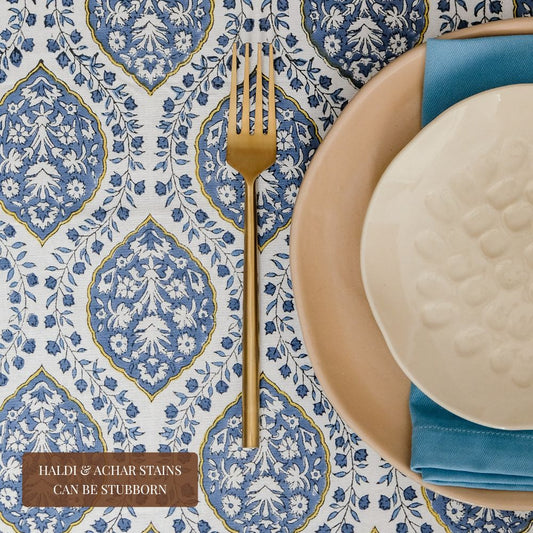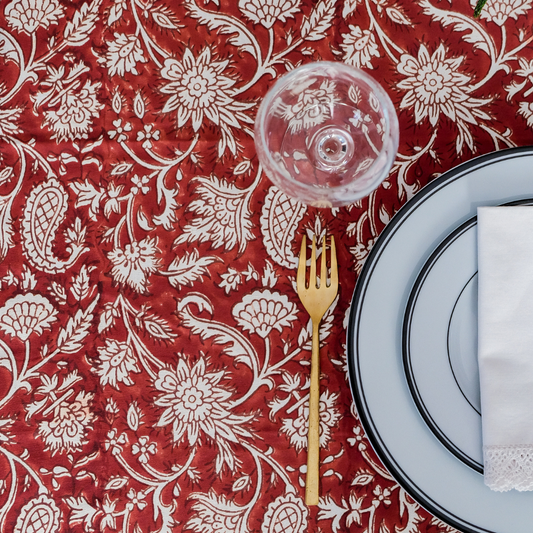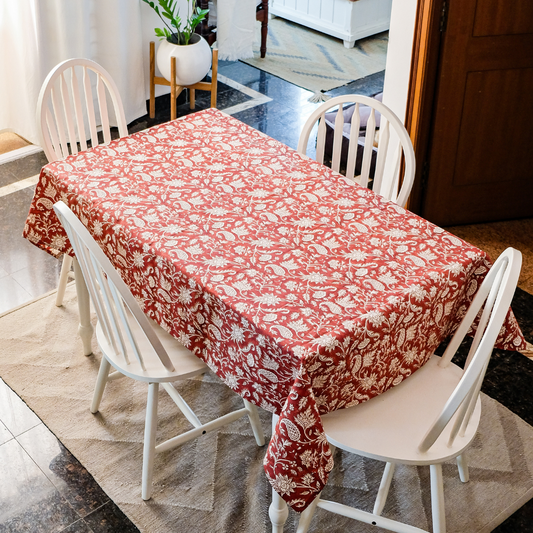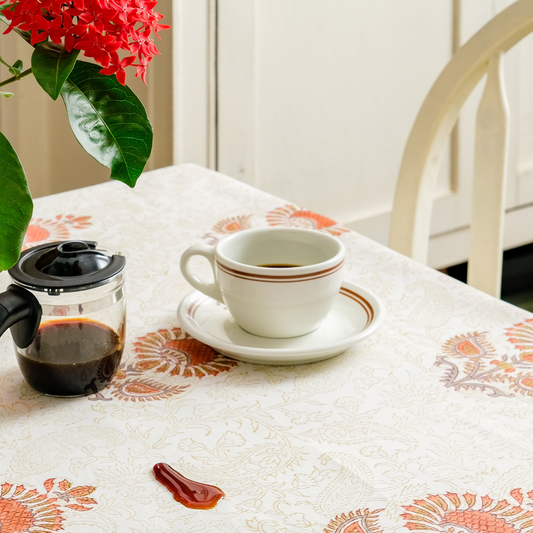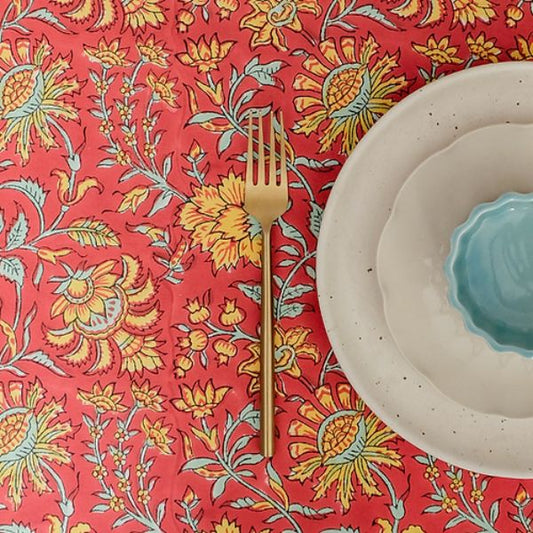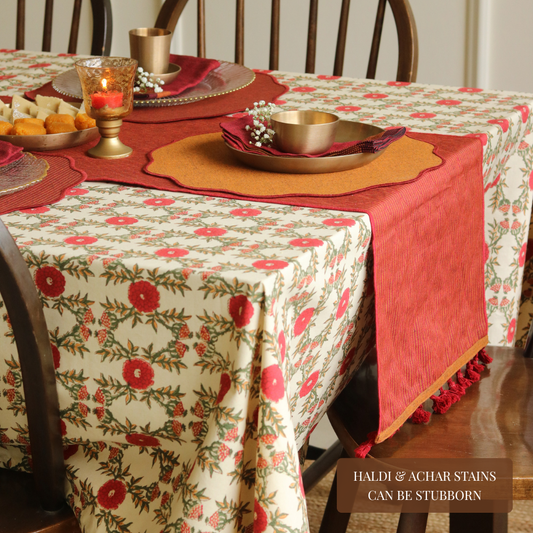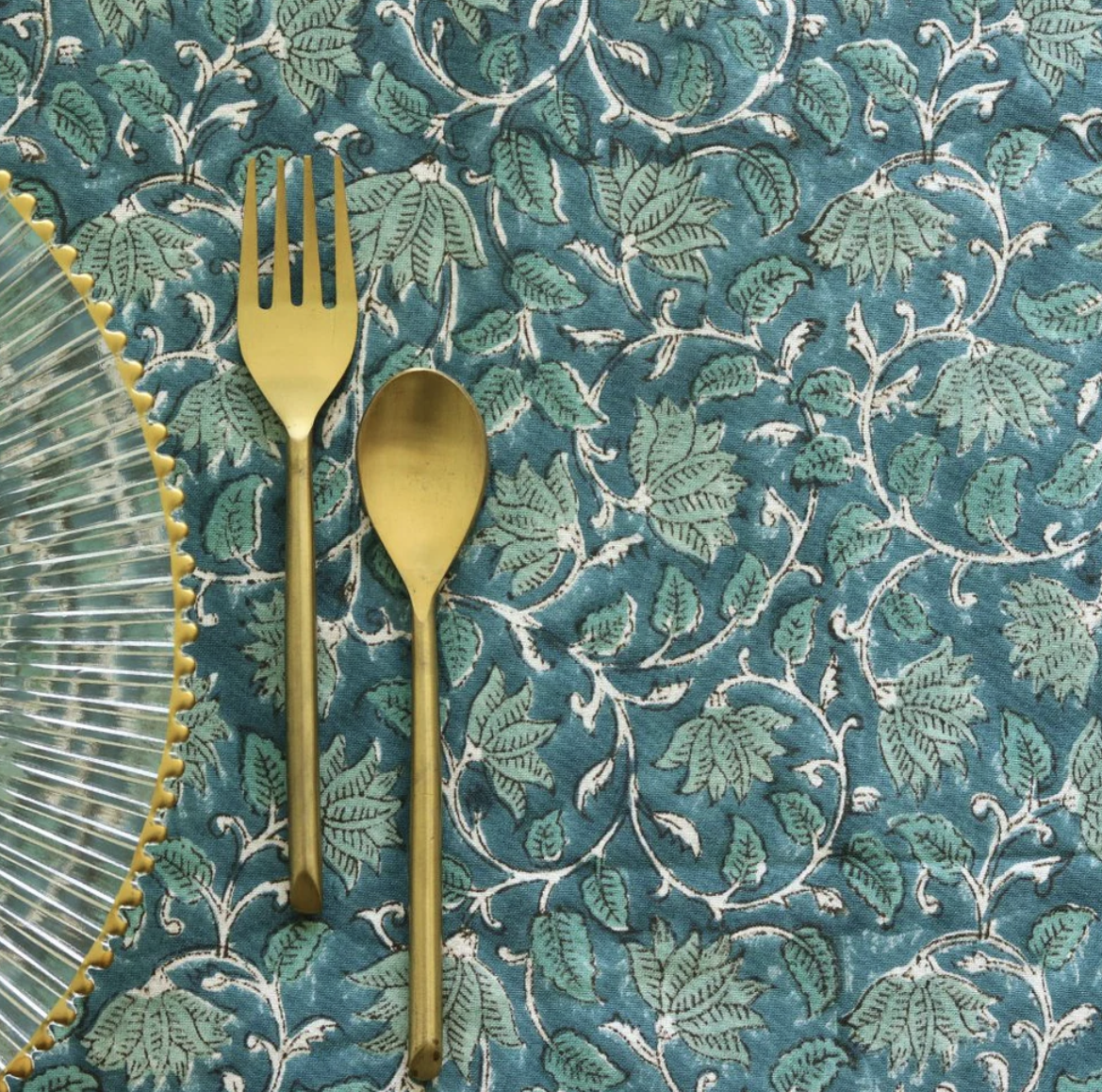The Timeless Block print : A 400 Year Craft Belongs On Today’s Dining Table

Ever watched a craftsman press a carved wooden block onto fabric and lift it to reveal a burst of intricate motifs? That quiet moment — the gentle thud of wood meeting cloth — carries centuries of tradition, patience, and human touch. This is hand block printing, one of India’s most poetic crafts, where art literally meets fabric. Each motif unfurling in color, tells a story not just of design — but of devotion.
The Journey Of Hand Block Printing -
Hand block printing is not just a technique, it’s an emotion translated through wood, dye, and fabric. Originating centuries ago in the royal courts and artisan villages of India, this art involves carving designs into wooden blocks, curing the blocks in oil, dipping them in natural dyes, and pressing them by hand onto fabric.
Every block leaves behind an impression — imperfectly perfect — making each piece truly one of a kind. No machine can replicate the gentle pause of an artisan’s hand or the rhythm of the block as it meets cloth. That is where the magic lives.

Ever wondered How Hand Block Printing is done?
1. Block carving: Artisans carve patterns — floral jaals, paisleys, vines — onto teak or sheesham wood, chiseling with infinite patience.
2. Fabric Preparation: The cotton or linen is washed, sun-dried, and treated naturally so that it can breathe and hold the colours beautifully and is then pinned to the surface for block printing.
3. Colour Mixing: Dyes are prepared using colour pigments or inks — indigo blues, mustard yellows, terracotta reds — each hue inspired by India’s landscapes.
4. The Act of Printing: The artisan dips the block into colour, aligns it carefully, and stamps it onto the fabric with a firm yet gentle press. The force applied has to be consistent - else we’ll be left with an uneven mix of darker and lighter sections. Alignment matters as well - else the print wouldn’t look seamless. So stamping each block right is a slow, deliberate task requiring high levels of concentration.
5. Printing Over and Over Again: For a print that consists of 5-6 colours, the artisan moves from one end of the table to the other, stamping one colour. He then waits for it to dry, and then repeats the process with the second colour and so on. This is essential to prevent colour smudging. So a 12m stretch can take days to complete - especially if the weather is humid or cold.
6. Drying, Washing & Finishing: After printing, the fabric is sun-dried, washed in water to fix the colours, and pressed — ready to grace homes with warmth and timeless beauty.

The Cultural and Socio-Economic Story Behind Every Print -
With the world turning toward conscious living, sustainability, and slow design, hand block printing has stepped gracefully into the global spotlight once again. Designers, curators, and homemakers now seek out the authenticity and warmth of hand-printed textiles — fabrics that tell stories of human touch. Hand block printing isn’t just an art form; it’s a way of life for thousands of artisan families across Rajasthan, Gujarat, and other heritage-rich corners of India.
In towns like Sanganer, Bagru, and Ajrakhpur near Jaipur, generations have grown up with the scent of dye in the air and the rhythmic thud of wooden blocks echoing through courtyards. For many of these families, the craft is their identity — a living lineage that binds them to their ancestors and their land.
From the block carvers and dyers to washers and printers, each artisan plays a vital role — passing down techniques that have remained unchanged for centuries. When you bring home a hand block printed table cover, you’re not just buying fabric; you’re supporting an entire village that breathes through art.

A Thought to Take Home -
So, the next time someone asks you, “What is hand block printing?” — tell them it’s not just a design on fabric. Tell them it’s the rhythm of an artisan’s hands, the patience of generations, and the poetry of color and wood coming together. Tell them your table isn’t just dressed — it’s adorned with the heartbeat of craftsmanship, the whispers of tradition, and the pride of Indian artistry.
You’re not just using a table cover — you’re laying down a story, one that carries the soul of an artisan who carved, stamped, and printed it with love.


